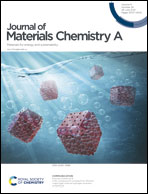Electrochemical reduction of carbon dioxide (CO2): bismuth-based electrocatalysts
Abstract
With the fast consumption of fossil fuels, the concentration of carbon dioxide (CO2) in the atmosphere has increased considerably, leading to possible irreversible climate changes. The electrochemical reduction of CO2 (ERCO2) to value-added chemicals and low-carbon fuels is expected to be an effective method for CO2 reduction and energy storage. In this review, the recent development of bismuth-based ERCO2 catalysts is comprehensively reviewed in terms of catalyst material design, synthesis, reaction mechanisms, and performance validation/optimization. Some influencing factors on the catalytic performance including electrolytes, catalyst structure/morphology/composition, reaction active sites (defects and oxygen vacancies), etc., are also discussed and analyzed. The main technical challenges and the possible future research directions are also proposed for overcoming the challenges toward the practical applications of such Bi-based electrocatalysts.

- This article is part of the themed collection: Journal of Materials Chemistry A Recent Review Articles


 Please wait while we load your content...
Please wait while we load your content...